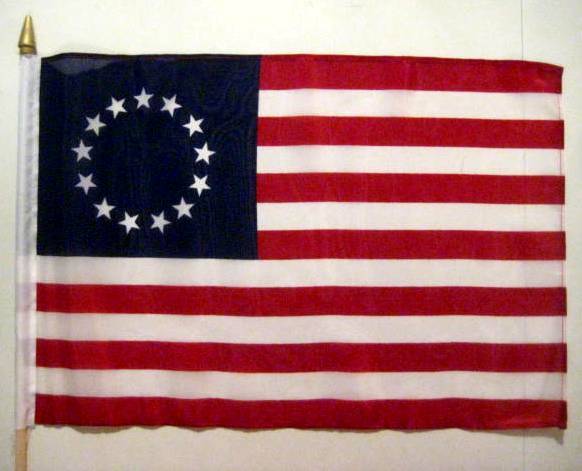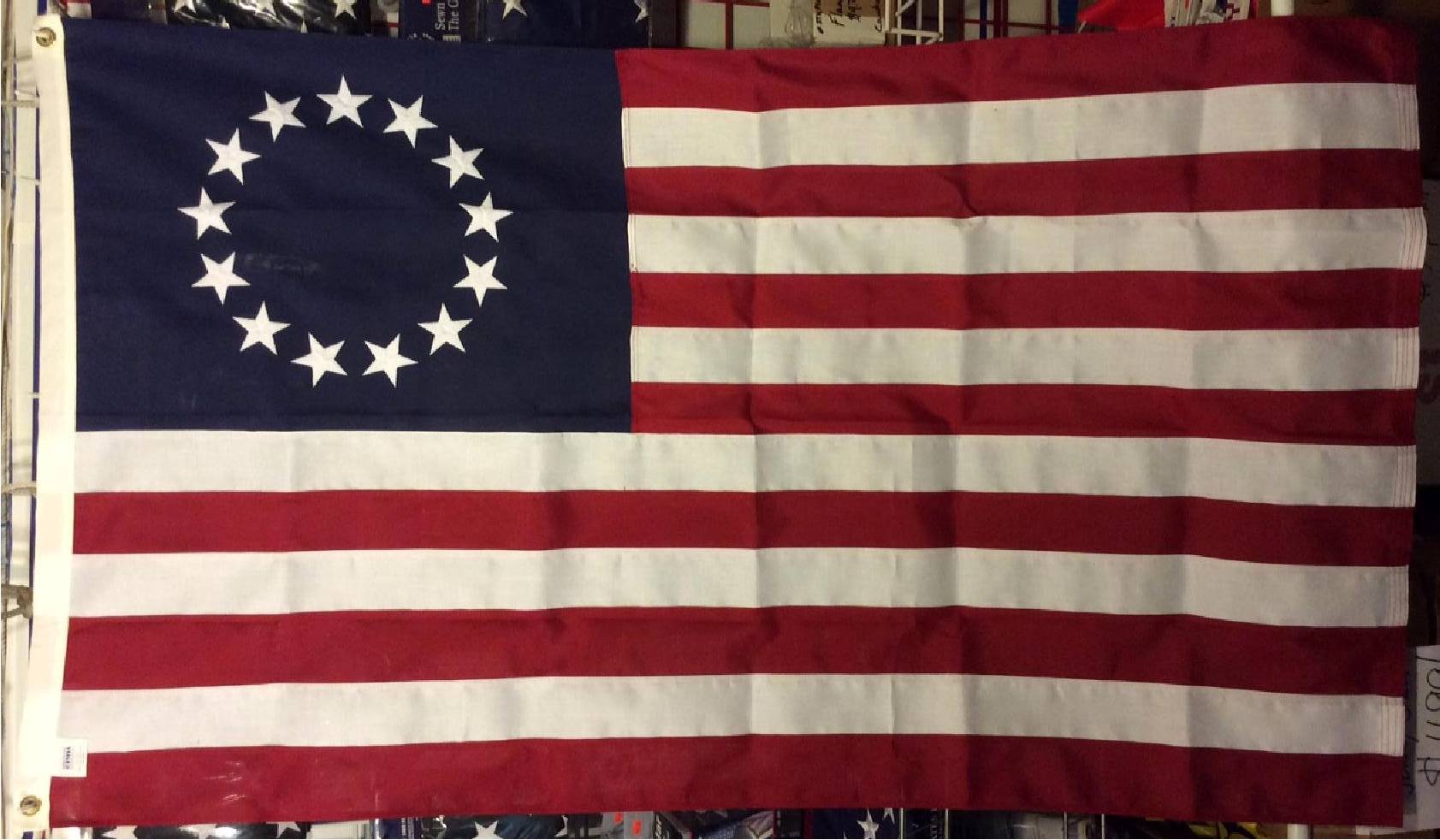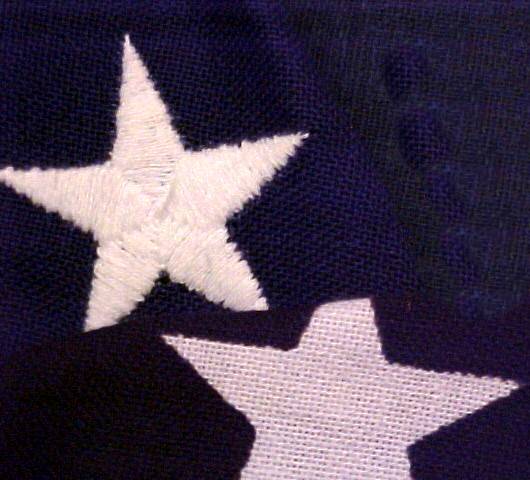Page Title: Betsy Ross Flag: Other Historical Flags
Defiant Flags Bennington Flags Betsy Ross
Civil War Flags North Historical Flags Washington Flags

Betsy Ross Stick Flag #SPH12B
12x18" Polyester sleeved and stapled to a 30" x 5/16" staff
| Dozen | ||
| $14.95 Closeout | ||
| This flag is of
beautiful quality, made in China and so stamped on the staff THERE IS A DRASTIC NEW POST OFFICE SURCHARGE OVER 30". THREE FLAGS SENT BY MAIL WOULD COST $49.95 INCLUDING POSTAGE!! All stick flags are exclusive of shipping costs which must be quoted based on a specific shipping address
|
||
|
Nylon Betsy Ross Flag MADE IN USA. These all have canvas heading and brass grommets. |
||
|
Item # |
Size |
Price |
|
#BR12ND |
12x18" Dyed Stars and Stripes Betsy Ross Flag |
$15.95 |
|
#BR23N |
2x3' Embroidered Stars, Sewn Stripes Betsy Ross Flag |
$53.50 |
|
#BR35N |
3x5' Embroidered Stars, Sewn Stripes Betsy Ross Flag |
$49.00
|
|
#BR46N |
4x6' Appliquéd Stars, Sewn Stripes Betsy Ross Flag |
$71.00 |
|
#BR58N |
5x8' Appliquéd Stars, Sewn Stripes Betsy Ross Flag |
$117.00 |
|
|
Made in USA 4x6" desk size Betsy Ross Desk flag on a 10" staff Fine silk like quality. 4x6" flag on 10" spear tip staff. CAUTION: Spear tip, Use with adult supervision. #UNIBET Betsy Ross Desk Flag shown with stand. $28.00 per dozen, sold by dozen only. |
|
Betsy Ross Flag History Flag expert Jeff Bridgeman and other scholars dispute the Betsy Ross story: "What we do know about
colonial 13-star flags is that none have a circle of stars like the Betsy
Ross design. There is a 1779-1780 painting of George Washington, by
Charles Wilson Peale, that depicts, in the background, a flag with a
perfect circle pattern of stars. This flag has a blue field and stars, but
no stripes. It may be the only evidence in a painting that truly suggests
that a circle-pattern flag may have existed in the Revolutionary period;
yet it wasn’t a Stars and Stripes, and Peale may have taken some artistic
liberty in its inclusion. Peale was known to be very detailed and keen on
accuracy; but he made at least four copies of the painting prior to 1782,
one of which shows the Battle of Trenton in the background instead of the
Battle of Princeton, like the original. So he obviously wasn’t opposed to
alterations. There are paintings of Revolutionary scenes by other artists
that depict Stars and Stripes flags with perfect circle patterns, but
these were painted in the 19th century and so cannot be trusted for their
authenticity with respect to the star configurations. The American flag
does not have a circle of stars on any of the early naval flag charts,
where numerous designs are pictured. An Article For “Focus”, The Semi-Annual Journal Of The Antiques Council, Winter 2006 by Jeff Bridgman, 2006 1 15 23 |




